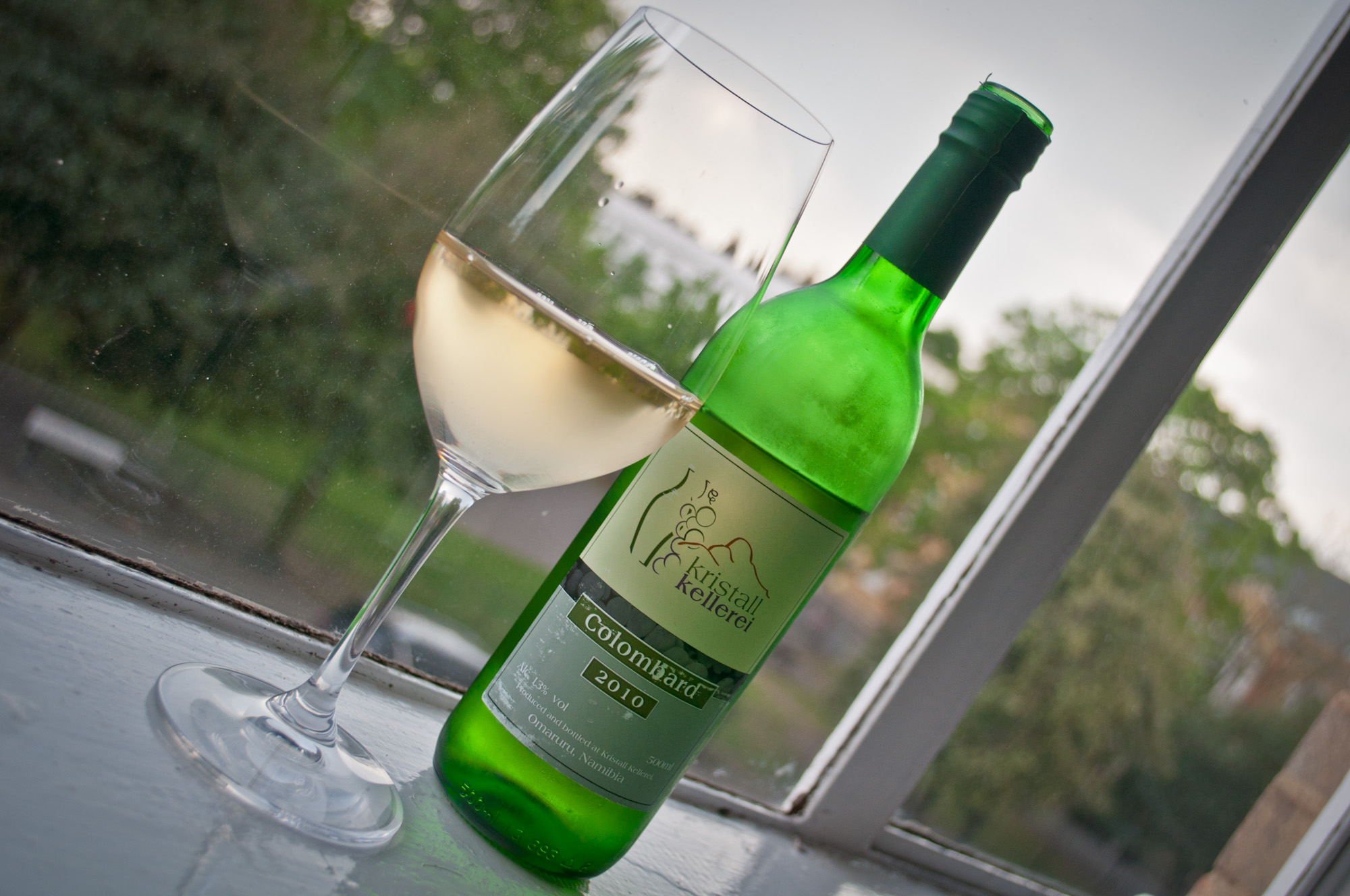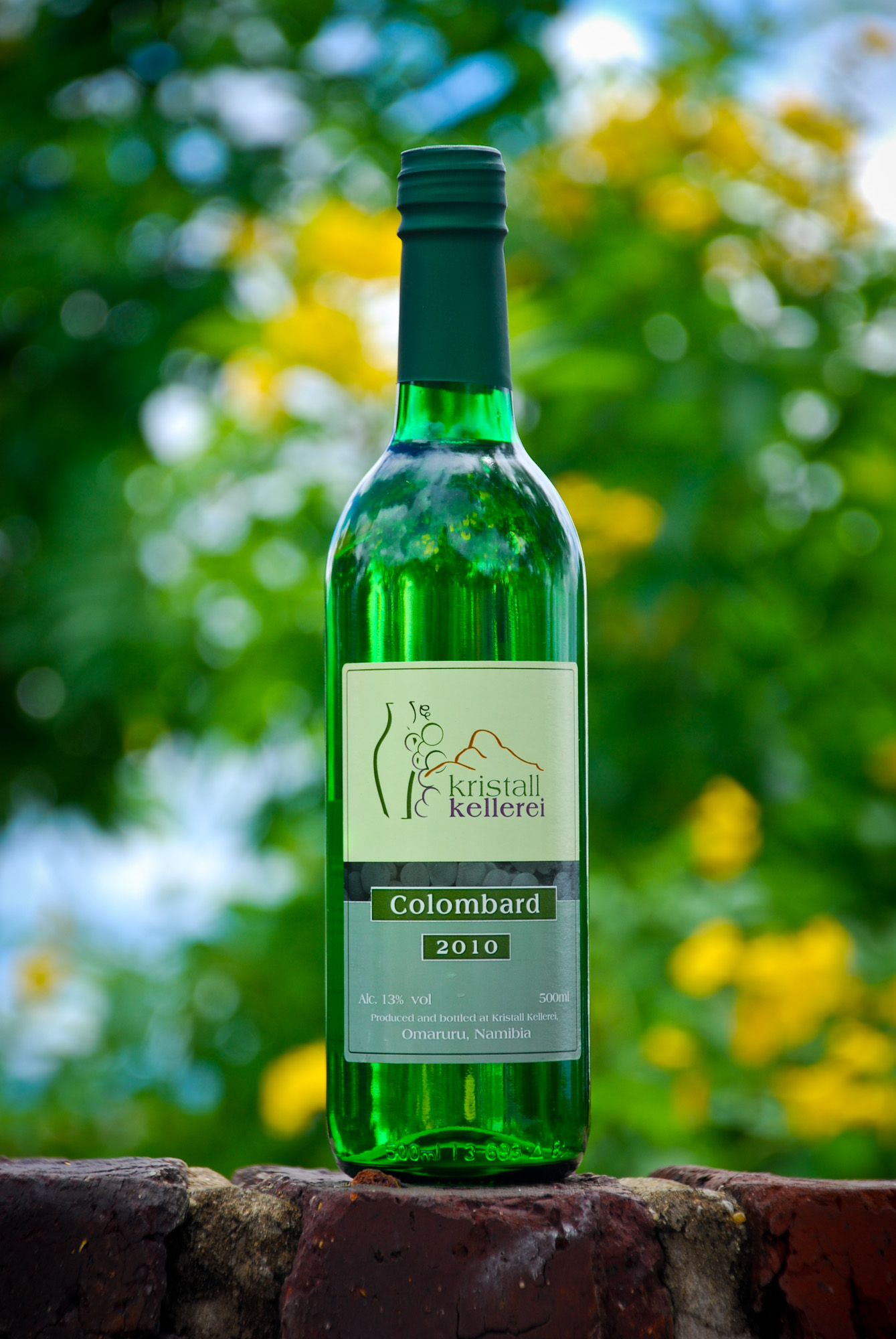Kristall Kellerei, Colombard, 2010
Winemaking in Namibia is such a small business, you can actually count the families involved in it on one hand. Wait, did the Wine Rambler just say "Namibia"? Yes, he did. What you see in front of you is a wine from a country you will perhaps just associate with arid Africa, whereas historians and Germans amongst you may be reminded of the German colony "Deutsch-Südwestafrika" (German South West Africa). There is a reason I mention this, as it were German priests who brought vines to Namibia, and the people behind Kristall Kellerei, who, indirectly, brought this wine to me, also seem to have German roots.

The Colombard from Omaruru in Namibia undertook a long journey on its way to my dinner table, and there is a story (and another wine) to be covered another time. The question for today is rather simple: is a wine made from a grape variety often described as boring and coming from an arid, hot African country actually worth drinking?
Winemaking in Namibia is not easy, as the back label of the Colombard reminds us: "The Kristall Kellerei Vineyards are subject to unique climatic conditions such as frost, extreme heat and water scarcity. Our wines are dry with a distinct Namibian character and are best enjoyed young." This is certainly not an area to grow challenging grape varieties, and so Colombard is the only white one Kristall Kellerei planted on just a few hectares when they started in 1990. Colombard used to be grown en masse in places like California and it has a reputation for being a neutral, perhaps even bland wine suitable for table wines or blending.
So as you can imagine, I was curious and excited to try such an unusual wine, but also not exactly hopeful to be wowed but what could be imagined as a dull, baked wine that might not even be a good base for an decent sauce. So how was it?
The colour was a pale straw, not exactly a surprise or promise of depth, but not unpleasant either. The first aroma that got me was honey, lovely, sweet and quite appealing honey. This was a little spiced up by a touch of lemon and orange peel and a subtle hint of menthol, all grounded not in my usual Riesling minerality but aromas of plaster board and a touch of wax. Oh, and don't forget the cough sweets. Overall, not exactly an explosion of fruit or depth of serious character, but not unpleasant either.

Drinking the Kristall Colombard was not too dissimilar an experience from putting the nose into the glass. The honey flavours were there, but receded slowly over time, and it featured some light fruit (apple) and herbal flavours too, also some liquorice. The texture was a little bit on the creamy side and, like the bouquet, the Colombard was pleasant but not exactly deep or exciting. It also lacked the vibrant dynamic of my favourite cool climate wines. Starting out more flavoursome, the wine then fell a little short on the tongue, especially mid-palate, but luckily came back with a somewhat stronger finish - although that was also when a slight bitter aftertaste (like bitter lemon acidity) and a touch of alcohol surfaced.
Don't let that scare you away, my tasting notes here are perhaps a little too analytic. The Colombard is certainly a very serviceable wine by itself, and with the unusual background it should also satisfy those more curious in wine. I was certainly pleasantly surprised but a wine that was not just a curiosity, although that added to the experience.
